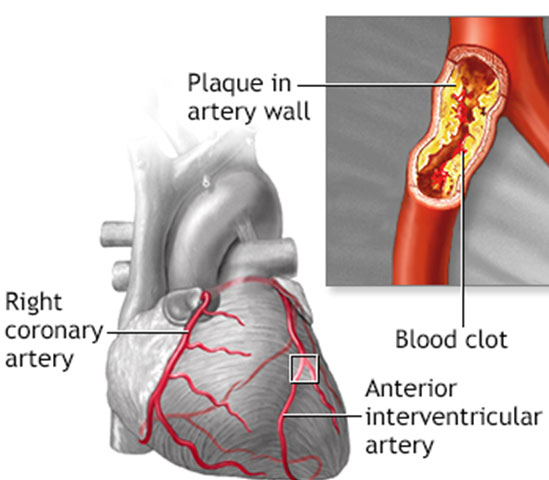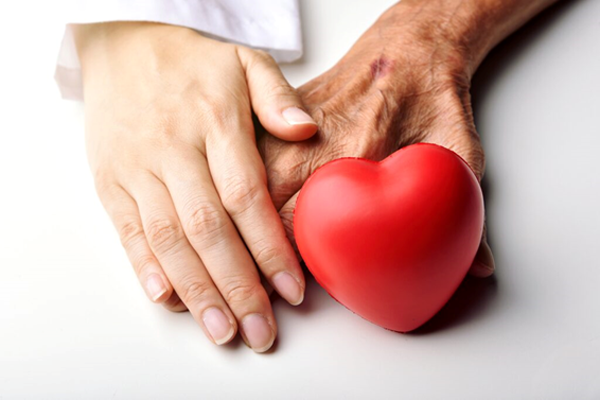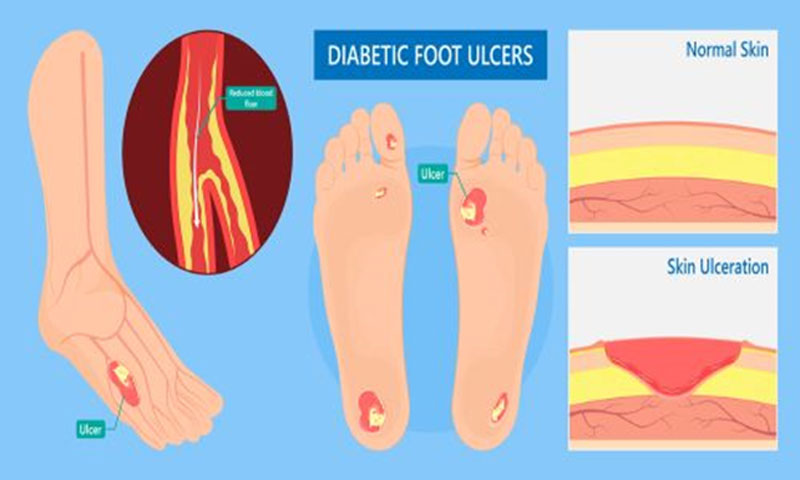Learn More About The Conditions And Diseases We Treat
Coronary Artery Disease
Coronary heart disease is a narrowing of the small blood vessels that supply blood and oxygen to the heart. Coronary heart disease (CHD) is also called coronary artery disease.
Causes
CHD is the leading cause of death in the United States for men and women.
CHD is caused by the buildup of plaque in the arteries to your heart. This may also be called hardening of the arteries.
- Fatty material and other substances form a plaque buildup on the walls of your coronary arteries. The coronary arteries bring blood and oxygen to your heart.
- This buildup causes the arteries to get narrow.
- As a result, blood flow to the heart can slow down or stop.

Symptoms
CAD can lead to angina. This is a type of chest pain linked to heart disease.
Angina may cause the following feelings across the chest:
- squeezing
- pressure
- heaviness
- tightening
- burning
- aching
Angina might also cause the following symptoms:
- indigestion
- heartburn
- weakness
- sweating
- nausea
- cramping
- dizziness
- uneasiness
CAD can also lead to shortness of breath. If the heart and other organs do not receive enough oxygen, any form of exertion can become very tiring, which may cause a person to pant for air. If a plaque has ruptured, it can cause shortness of breath at rest. The first symptom is usually chest pain that spreads to the neck, jaw, ears, arms, and wrists, and possibly to the shoulder blades, back, or abdomen. Symptoms can be more atypical in women.
Changing position, resting, or lying down is unlikely to bring relief. The pain is often constant but may come and go. It can last from a few minutes to several hours.
A heart attack is a medical emergency that can result in death or permanent heart damage. If a person is showing symptoms of a heart attack, it is vital to call emergency services immediately.

What is peripheral arterial disease?
Peripheral arterial disease (PAD) is narrowing or blockage of arteries that causes poor blood flow to your arms and legs. PAD is most common in the legs.
The most common cause of PAD is the buildup of plaque on the inside of arteries. Over time, plaque builds up in the walls of the arteries, including those that supply blood to your legs. If you have PAD, you're likely to have plaque in other arteries in your body. This raises your risk of a heart attack and stroke.
Peripheral arterial disease is also called peripheral vascular disease.
What are the symptoms?
Many people who have PAD don't have symptoms.
If you have symptoms, they may include a tight, aching, or squeezing pain in your calf, thigh, or buttock. This pain is called intermittent claudication. It usually happens after you have walked a certain distance. The pain goes away if you stop walking. As PAD gets worse, you may have pain in your foot or toe when you aren't walking.
Other symptoms may include weak or tired legs. You might have trouble walking or balancing.
If PAD gets worse, you may have other symptoms caused by poor blood flow to your legs and feet. These symptoms aren't common. They may include cold or numb feet or toes, sores that are slow to heal, or leg or foot pain when you're at rest.
Critical Limb Ischemia (CLI) is a severe form of PAD
Chronic Limb Ischemia, or CLI is not triggered by a specific event, but it develops with time as the blood vessels narrow. Chronic Limb Ischemia is not a medical emergency but it can cause serious complications, such as pain and wounds that don’t heal, and this can lead to infection. Chronic Limb Ischemia can become critical Limb Ischemia if the narrowed blood vessels are blocked. People with CLI are at high risk for limb amputation and cardiovascular problems, such as a heart attack.
What are the symptoms of Limb Ischemia?
The most common Limb Ischemia symptoms to look for include:
- Feeling of pins and needles in the affected limb
- Pain of the affected limb, at rest or during movement. Another name for the pain is claudication.
- Pale, shiny skin on the affected limb compared to the rest of the body
- Paralysis if the affected limb
- Skin temperature cooler on the affected limb than the rest of the body
- Sores, skin infections on the affected limb that will not heal
- Thickened toenails on the affected foot

